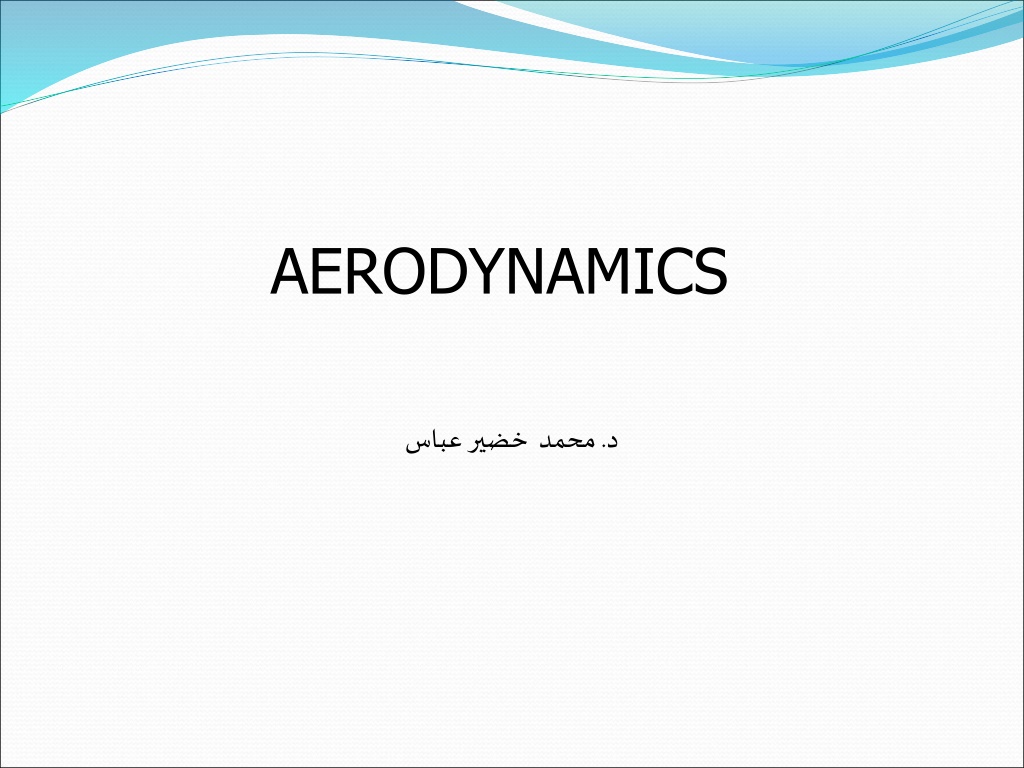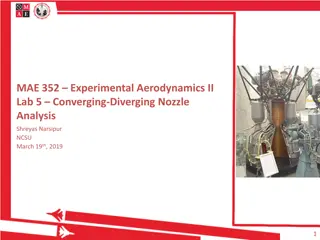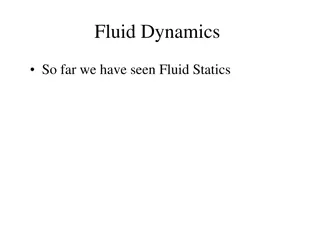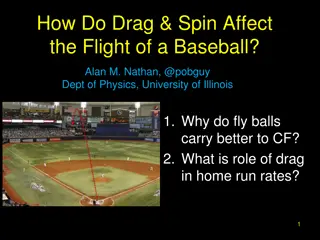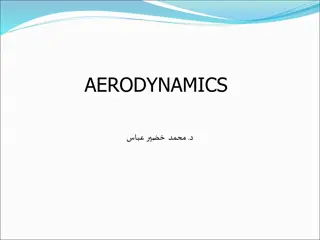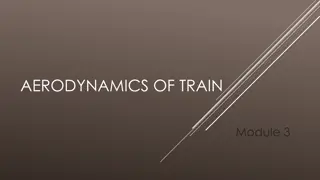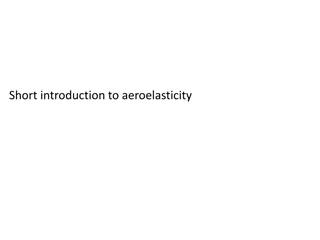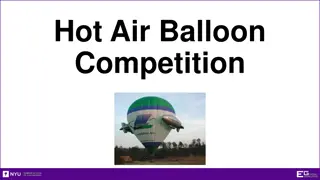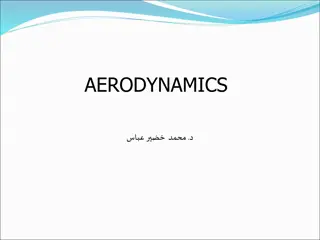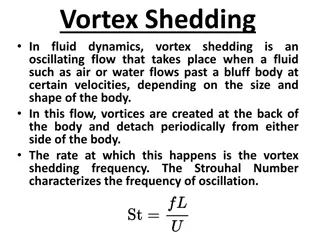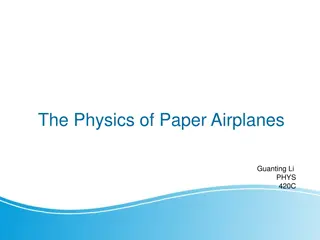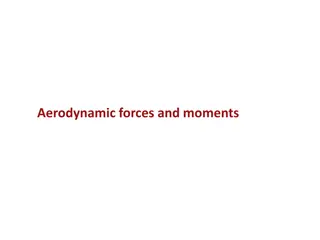Understanding Aerodynamics: Fundamentals and Applications
Aerodynamics is the study of airflow around objects and its impact on forces and moments. This field covers fundamental principles, aerodynamic variables, forces and moments, practical objectives, and more. By exploring topics like flow similarity and dimensional analysis, aerodynamic engineers predict forces on bodies moving through fluids like air. With a focus on pressure distribution, shear stress, lift, drag, and other key factors, aerodynamics plays a crucial role in various applications, from aircraft design to heat transfer analysis in fluid flows.
Download Presentation

Please find below an Image/Link to download the presentation.
The content on the website is provided AS IS for your information and personal use only. It may not be sold, licensed, or shared on other websites without obtaining consent from the author. Download presentation by click this link. If you encounter any issues during the download, it is possible that the publisher has removed the file from their server.
E N D
Presentation Transcript
Contents Aerodynamics: Some Introductory Thoughts Aerodynamics: Some Fundamental Principles and Equations Fundamentals of Inviscid, Incompressible Flow Incompressible Flows Over Airfoils Incompressible Flows Over Finite Wings 1. 2. 3. 4. 5.
Chap.1 Aerodynamics: Some Introductory Thoughts
OUTLINE Classification and practical objectives Some fundamental aerodynamic variables Aerodynamic forces and moments Center of pressure Dimensional analysis Flow similarity Types of flow
Classification and practical objectives Distinction between Solid and Fluid Under application of shear force Solid: finite deformation Fluid: continuously increasing deformation Classification of fluid dynamics Hydrodynamics: flow of liquids Gas dynamics: flow of gases Aerodynamics: flow of air
Practical objectives of aerodynamics The prediction of forces and moments on, and heat transfer to, bodies moving through a fluid (usually air). Determination of flows moving internally through ducts. (ex. Flow properties inside rocket and air-breathing jet engines)
Some fundamental aerodynamic variables Pressure: dA dF = lim , 0 p dA Density: dm = lim , 0 dv dv Temperature, T Flow velocity, V
Aerodynamic forces and moments Aerodynamic forces and moments are due to Pressure distribution Shear stress distribution Nomenclature R resultant force L lift D drag N normal force A Axial force
Relation between L,D and N,A = sin N D cos sin L N A = + cos A Representation of N , A and M LE in terms of pressure p and shear stress Primes denote force per unit span Subscript u denote upper surface while l denote lower surface
TE TE TE = + + ' ( cos sin ) ( cos sin ) N p ds p ds u u u l l l LE LE TE = ' = + + + A ( p sin cos ) ds p ( sin cos ) ds u u u l l l LE LE sin TE ' LE + + M [( p cos sin x ) p ( cos ] y ) ds u u u u u LE TE + + [( p cos sin x ) p ( sin cos ] y ) ds l l l l l LE
Dimensionless force and moment coefficient S = reference area ( planform area for wing) l = reference length (chord length for wing) Dynamic pressure = q 1 2 V 2 L Lift coefficient CL q S D CD Drag coefficient q S N CN Normal force coefficient q S A Axial force coefficient CA q S Moment coefficient M CM q Sl
Center of pressure Definition The point on the body about which the aerodynamic moment is zero. Location of center of pressure , if is small ' cp N ' M ' M LE x = LE x cp ' L
Dimensional analysis Factors affecting aerodynamic force R Free stream velocity V Free stream density Viscosity of the fluid The size of the body (usually represented by the chord length c) The compressibility of the fluid a R=f( , V , c, , a ). Dimensional analysis can reduce the number of independent parameters affecting R, such that can save the cost of wind tunnel test.
Buckingham pi theorem Fundamental dimensions : m = dimension of mass l = dimension of length t = dimension of time Variables and their dimensions = mlt R V = =lt 2 3 1 ml a l c = 1 t = =lt 1 1 ml
products 1 = 2 = 3 = ( ( ( , , , ) f f f V , V , V c , , c R a 3 , , ) ) c 4 5 For 1, assume that V = 1 ( 1 = ml d b e c R 3 1 2 d b e ) ( ) ( ) ( ) lt l mlt Equating the exponents sum of m to be zero, and similarly for l and t, we can obtain simultaneous equations of b, d, e, solving these equations leads to
b = -2, d = -1, e = -2. Results form 1 R = = 1 2 2 R V c 1 2 2 V c R R = = C 1 R 1 q S 2 V S 2 Similarly for 2 = V c Re 2 Re, Reynolds number, is a measure of the ratio of inertial forces to viscous forces in a flow.
For 3 V = a M 3 M , Mach number, is the ratio of the flow velocity to the speed of sound. CR (also for CL, CD, CM) is function of Re and M . M (Re, C 6 R = f ) Re and M are called similarity parameters.
